Diani Beach is the kind of coastline where the days blur into rhythm: warm Indian Ocean waves, endless white sand, and afternoons spent drifting between beach cafés and swims.
For digital nomads, Diani offers a rare blend: reliable internet thanks to new coworking and coliving projects, an affordable cost of living, and a community that’s both global and deeply Kenyan. It’s a place to work with focus, but also to slow into the pace of the coast.
In this complete guide, we’ll cover everything you need to know about life in Diani Beach: where to stay, how to set up for work, the best cafés and restaurants, and what to do when you’re not on your laptop—from safaris inland to sailing on the reef.
Why Diani Beach?
Diani Beach has a way of collapsing the distance between postcard paradise and real, everyday life. On one hand, it’s all white sand, warm Indian Ocean currents, and palm trees leaning into turquoise water. On the other, it’s motorbikes rattling down village streets, fruit stalls stacked with pineapples and jackfruit, and families gathering for Sunday swims. It’s a place where the “resort bubble” exists, but step outside it and you find a living, breathing Kenya.
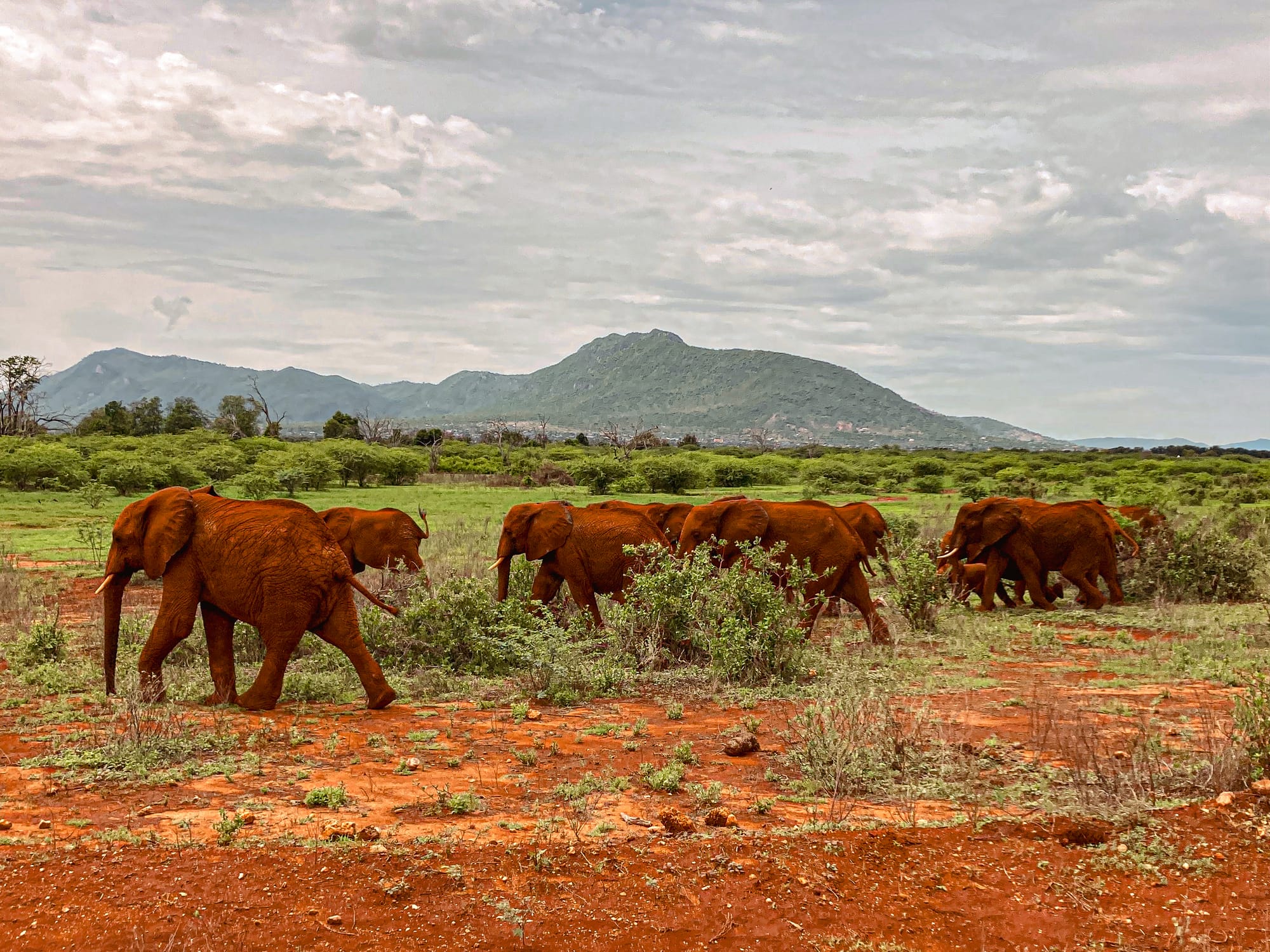
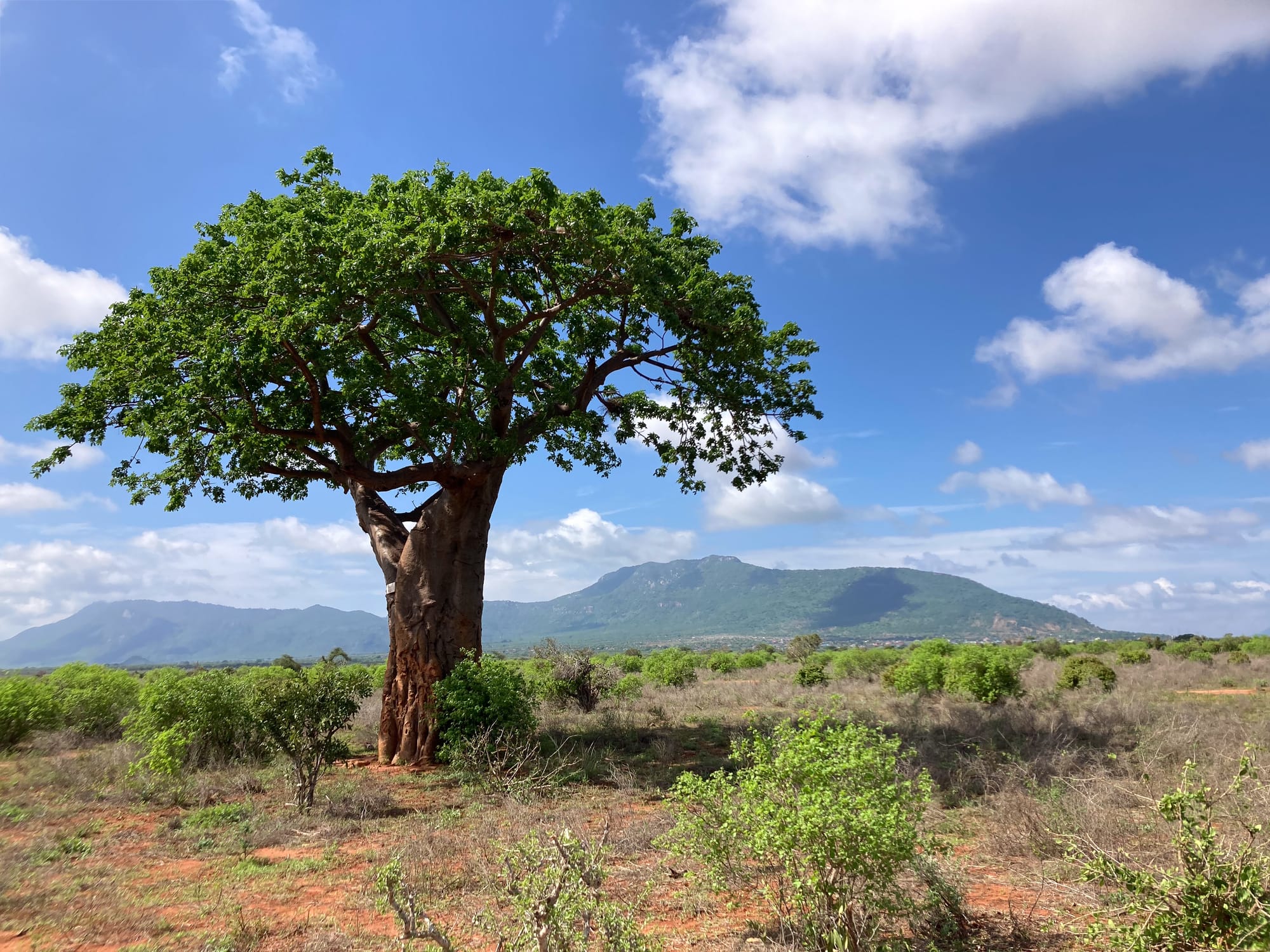
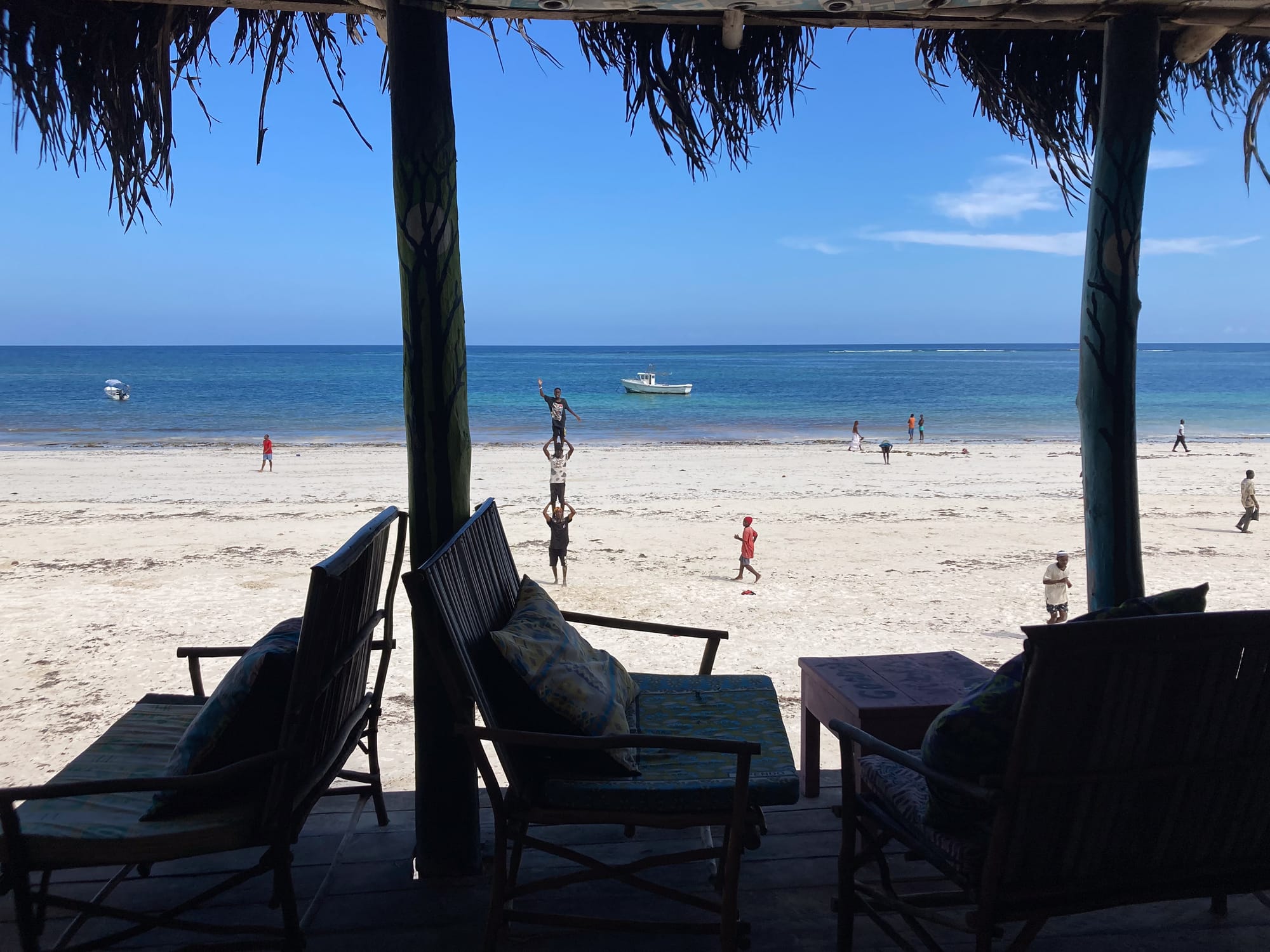
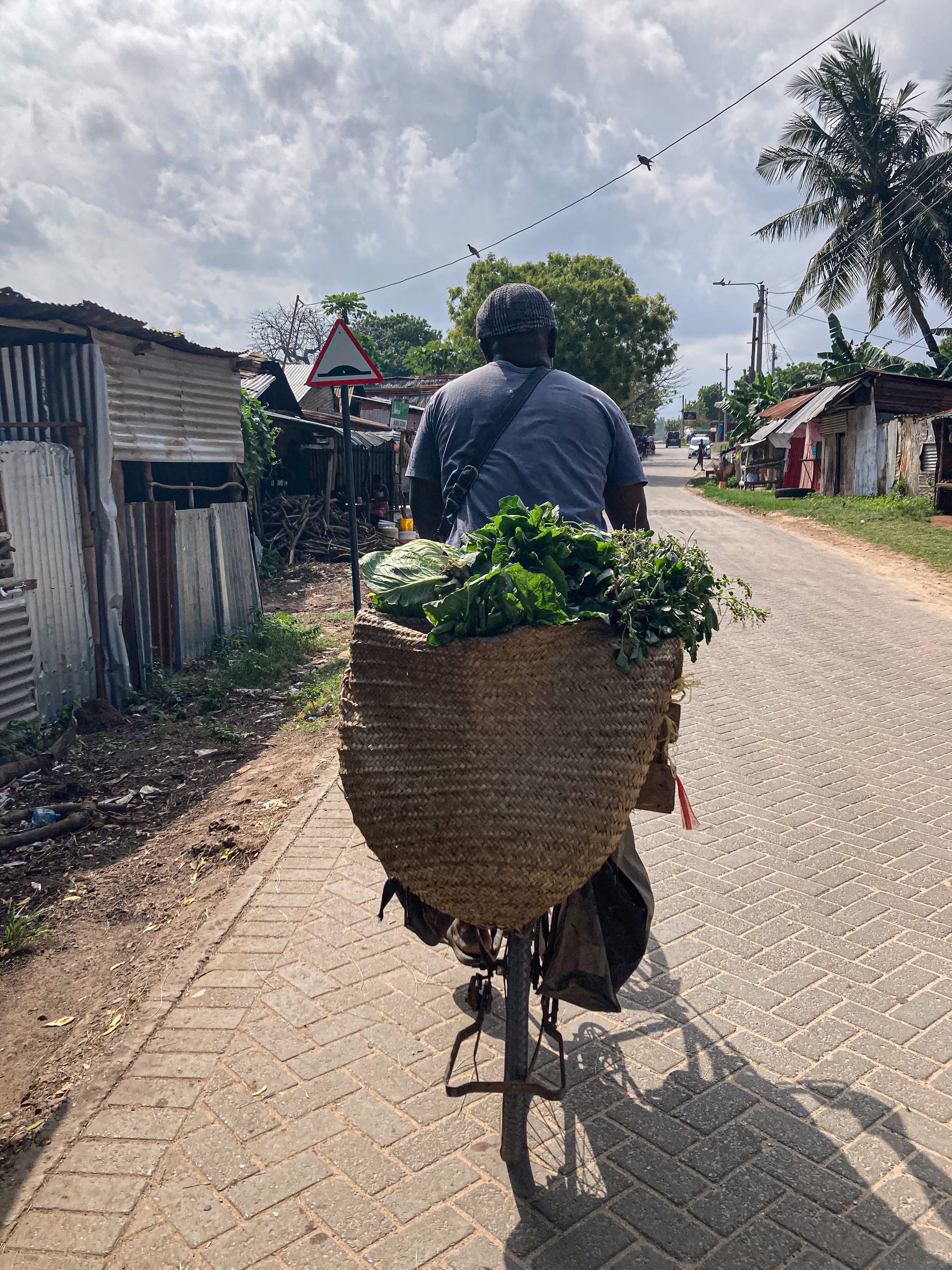
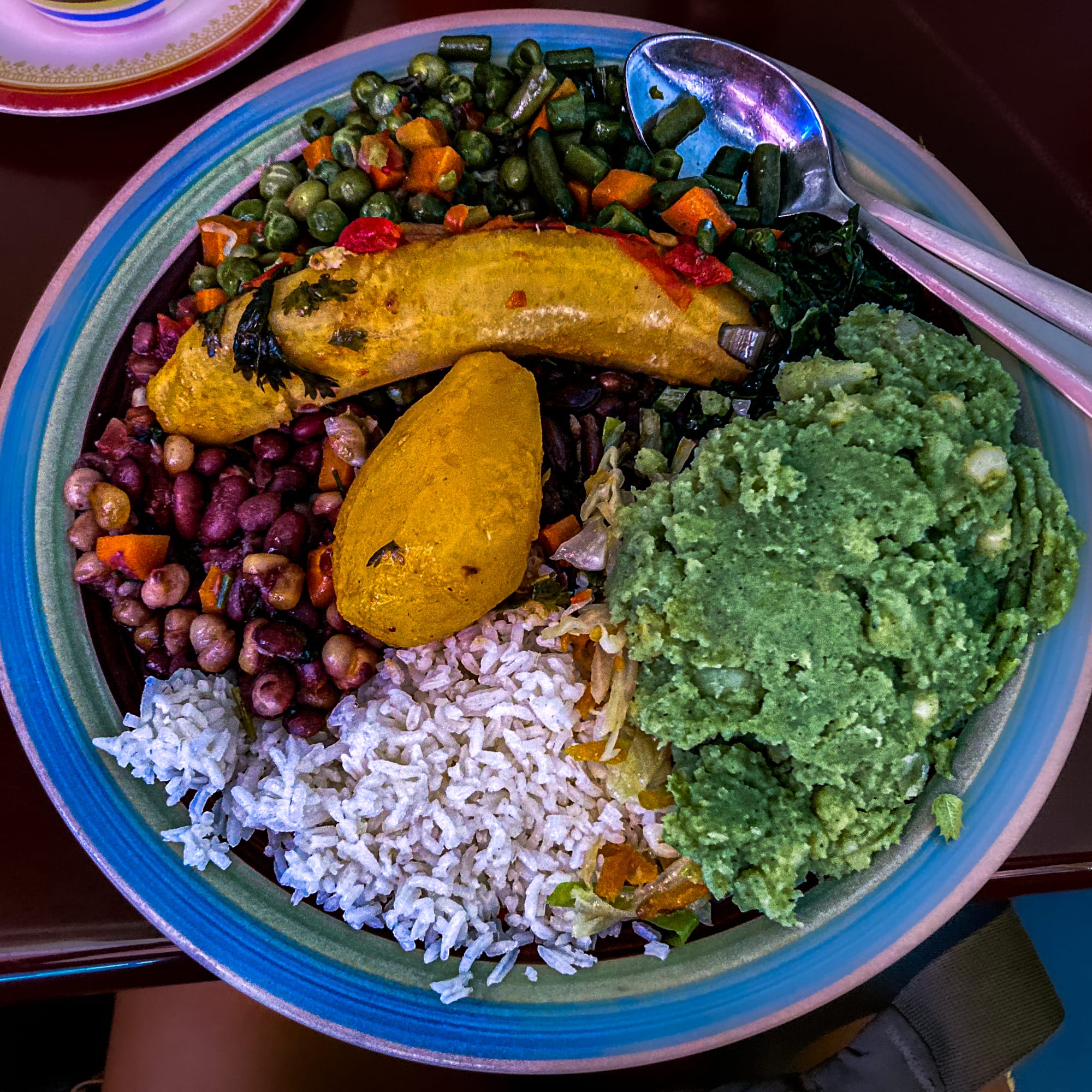
What makes Diani different from other coastal destinations isn’t just the beach—it’s the mix of rhythm and access. You can start your morning with strong coffee at a beach café, swim before lunch, and spend the afternoon working on Skippers' fast Starlink wifi. When the workday ends, you’re a short drive from kitesurfing on the reef, sundowners by the shore, or hopping on a weekend safari to see elephants crossing Tsavo’s red earth. Everything here feels close: the ocean, the wild, the community.
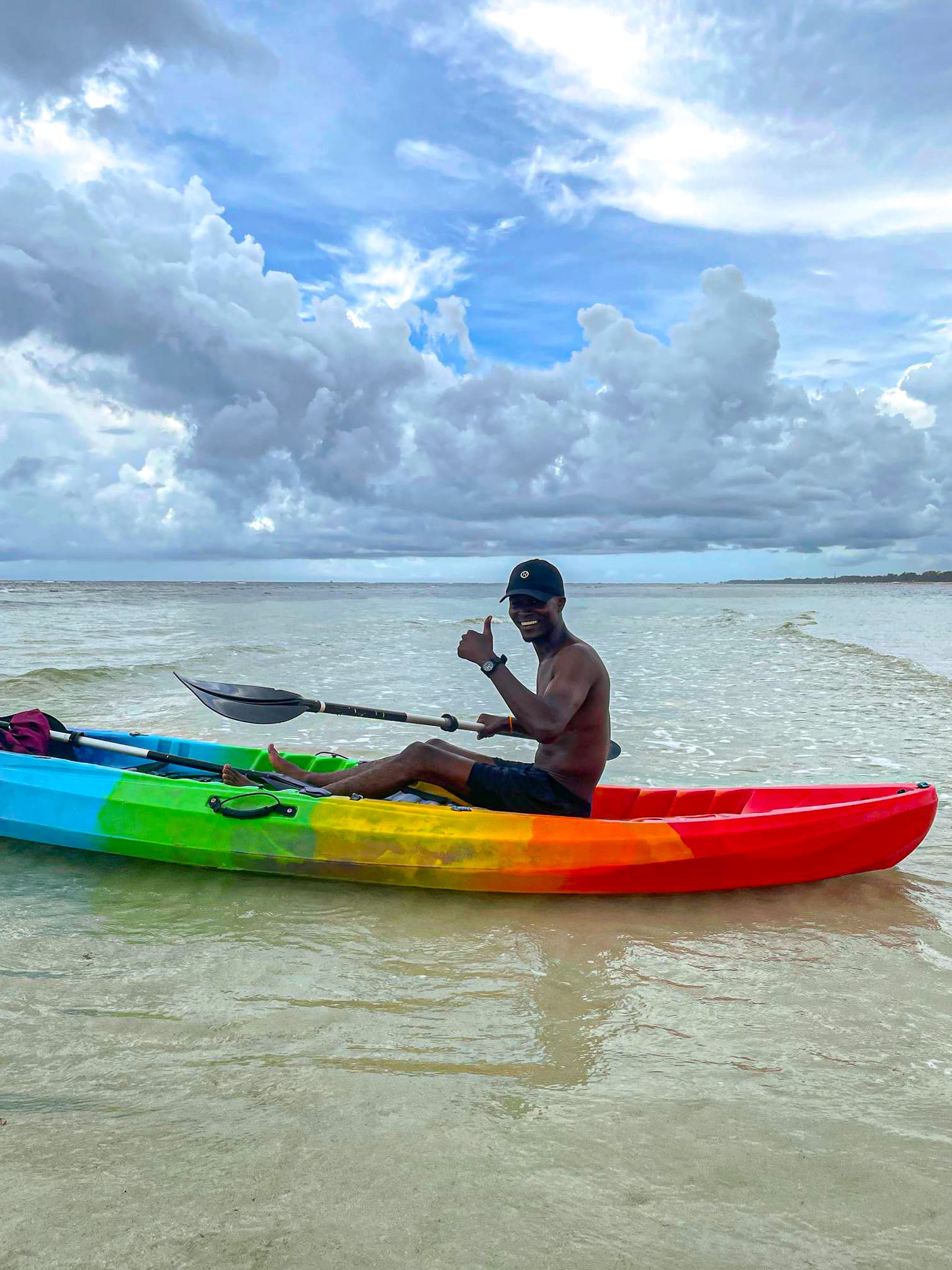
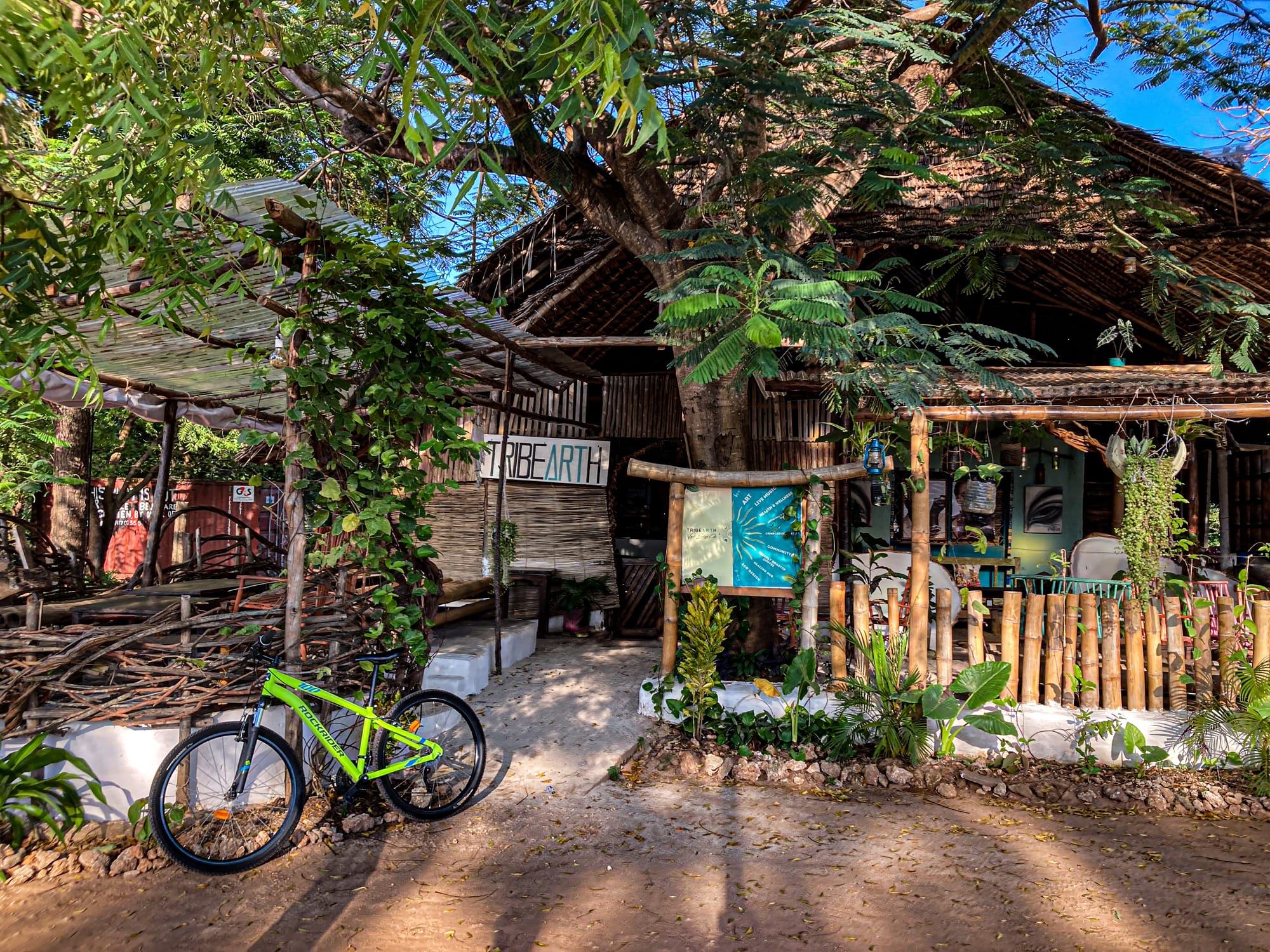
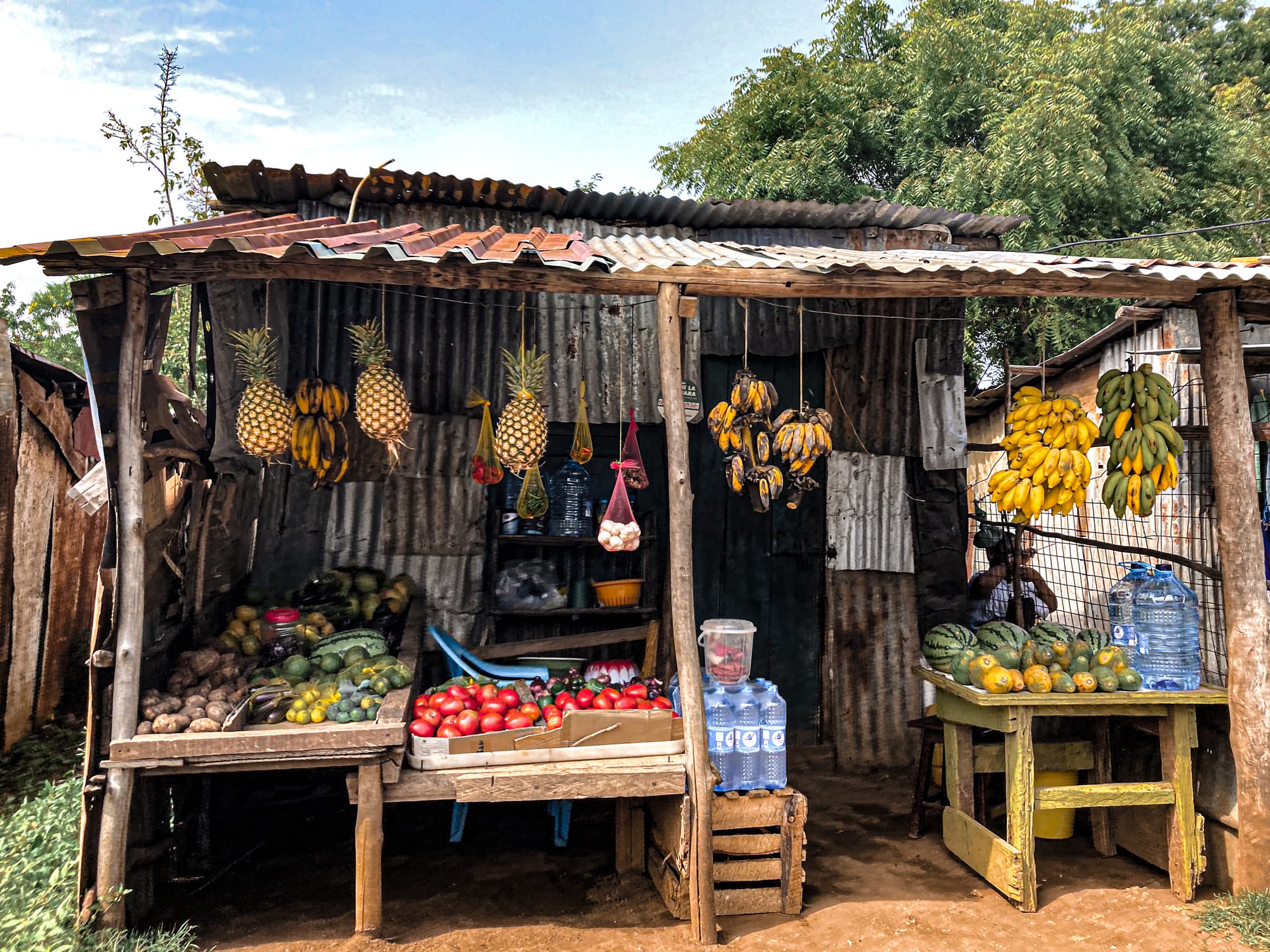
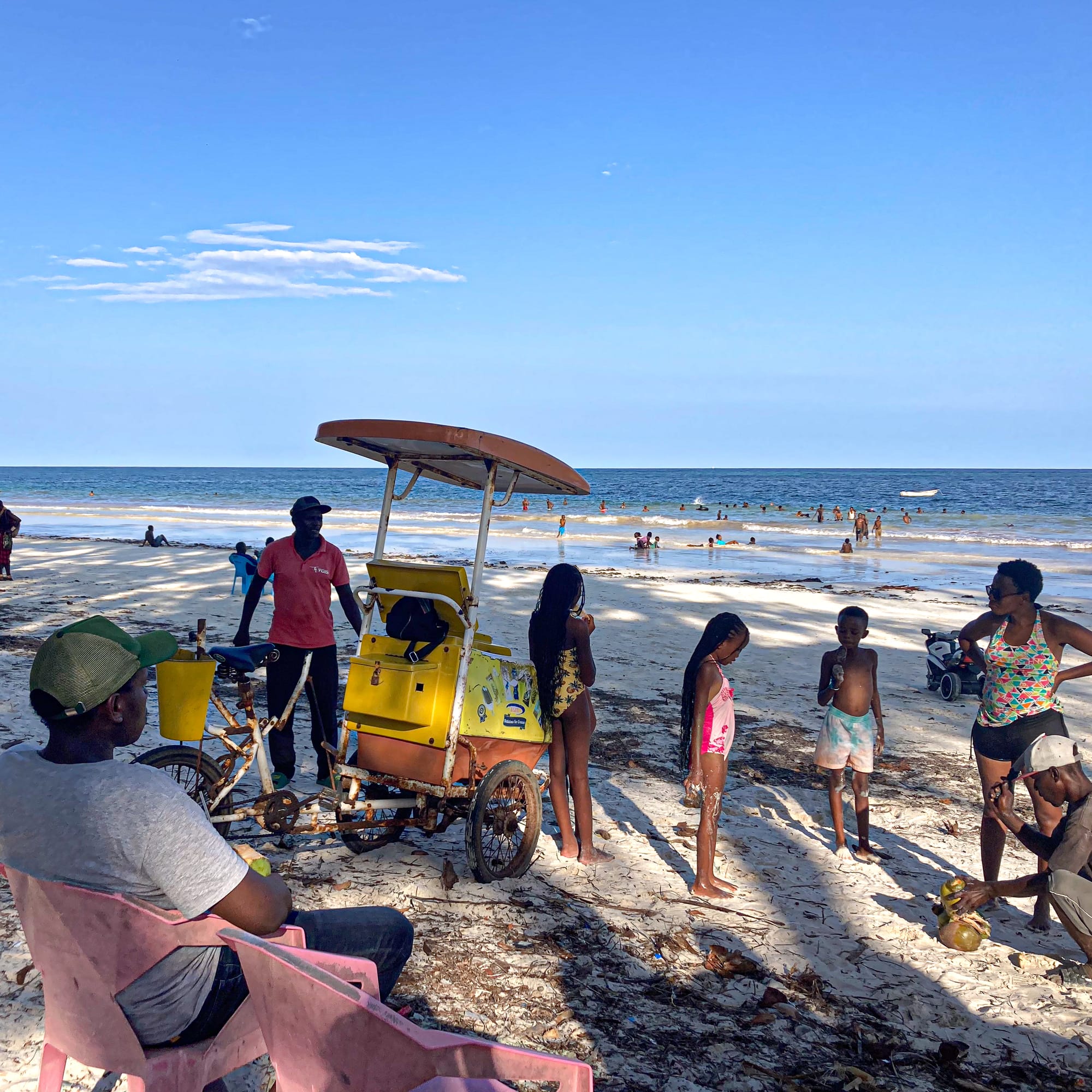
Diani isn’t yet a polished nomad hub, and that's what makes it uniquely special. Infrastructure is improving, but it still feels raw, connected, and real. You’ll also find street food, roadside markets, and the uncurated vibrancy of local life.
Beyond the resort image
Diani is often framed as a resort destination—the turquoise water, the beachfront infinity pools, the photos of cocktails at sunset. And while that version exists, it isn’t the full story. Step past the hotel gates and you discover a town that is alive with its own rhythms, one that would carry on regardless of who comes to swim on its beaches. The main road is lined with fruit stalls, mechanics, phone shops, barbers, tailors. Families ride together on motorbikes, schoolchildren in uniform spill out onto the roadside at the end of the day, and music drifts from open-air bars long after dusk.
Living here as a digital nomad gives you the time to see this side of Diani, the side most tourists miss. It’s in the roadside cafés serving chapati and beans, the markets stacked with pineapples and jackfruit, the sense of community that gathers for weddings, church services, or football matches on dusty fields. Spend enough time here and you start to realize that the resort angle is just one layer—beneath it is a culture built on kinship, celebration, and resilience.
That’s what makes staying longer in Diani rewarding. You still have the white sand and the warm Indian Ocean at your doorstep, but you also find yourself immersed in everyday Kenya. The laughter of children racing kites on the beach, the conversations with shopkeepers who start to recognize you, the feeling of belonging—these are the things that take Diani out of the realm of holiday brochure and make it somewhere you can actually live.
When to go
The best months to visit Diani Beach are December through March and July through September. These are the dry seasons, when skies are clear, the ocean is calm and warm, and the beach shows off its postcard beauty. December in particular has a festive atmosphere, with both local and international visitors filling the coastline, and the energy spilling into the new year. January and February are still sunny but less busy, making them ideal if you want reliable beach weather without peak holiday crowds.
April and May are typically the wettest months on the coast, with heavy downpours and occasional flooding. Many resorts and smaller guesthouses close during this period, and while the landscape turns lush and green, it’s not the most practical time for nomads who rely on steady connectivity and open cafés. June brings a short cool-down, with breezier days and quieter beaches before the next dry season sets in.
July, August, and September are beautiful months in Diani — warm days, less humidity than earlier in the year, and excellent conditions for both swimming and kitesurfing. These months overlap with European summer holidays, so you’ll notice more visitors, but the long stretch of coastline means it rarely feels crowded. October and November bring the short rains, with lighter, more sporadic showers. It’s still possible to enjoy the beach, but the weather is less predictable.
Overall, Diani is tropical year-round. Even in rainy months, there are sunny intervals, and the sea stays warm enough to swim in all seasons. But if you want the most consistent beach days and best balance of weather and vibe, stick to the dry seasons.
Our advice on the best time to be in Diani Beach
If you’re coming to work remotely and spend weekends on the beach, January–February and September are ideal: reliable weather, good internet, and a calmer atmosphere.
If you’re here mainly for kitesurfing, July and August are your best bets, with steady winds and warm water.
If you want to experience Diani at its most lively, come in December, when the coast is full of energy, events, and long nights.
If you’re looking for solitude and don’t mind some rain, June or October can offer a quieter, slower-paced stay.
No matter when you come, bring strong sunscreen and light clothes — the coastal sun is intense even outside the peak dry months.
Getting to and from Diani Beach
Diani Beach is served by Ukunda Airstrip (UKA), a small local airport literally right next door to Skippers Coliving. From Nairobi, several domestic airlines—including Safarilink, Jambojet, and Skyward Express—offer daily flights to Ukunda, making it the most convenient option for getting to Diani.
Another option is to fly into Moi International Airport (MBA) in Mombasa, which has frequent connections to Nairobi, other parts of Kenya, and select regional hubs like Addis Ababa, Zanzibar, and Dubai. From Mombasa, it’s around a 1.5–2 hour drive to Diani depending on traffic and the ferry crossing at Likoni. It’s an adventure in itself—bustling streets, views of the port, and finally the relief of open coastal road as you head south.
If you prefer overland travel, the SGR (Standard Gauge Railway) connects Nairobi to Mombasa in about 5–6 hours, and from there you can continue by taxi or shuttle to Diani. This route is more time-consuming than flying, but it offers an incredible glimpse of rural Kenya—red earth fields, small villages, and the possibility of spotting wildlife along the way.
For nomads moving between destinations, Diani pairs naturally with Zanzibar for a wider Indian Ocean circuit. With Nairobi as the main international entry point, it’s easy to weave Diani into a broader East Africa route while still keeping logistics manageable.
Working remotely from Diani Beach
For digital nomads, the center of gravity in Diani is Skippers Coliving. Built from repurposed shipping containers just steps from the airport, it has become the town’s most reliable hub for long-term stays and remote work. The coworking space is small but functional, with steady Starlink internet backed up by secondary lines, solar power, and a generator for when the grid goes down. In a region where outages are common, this kind of redundancy makes all the difference.
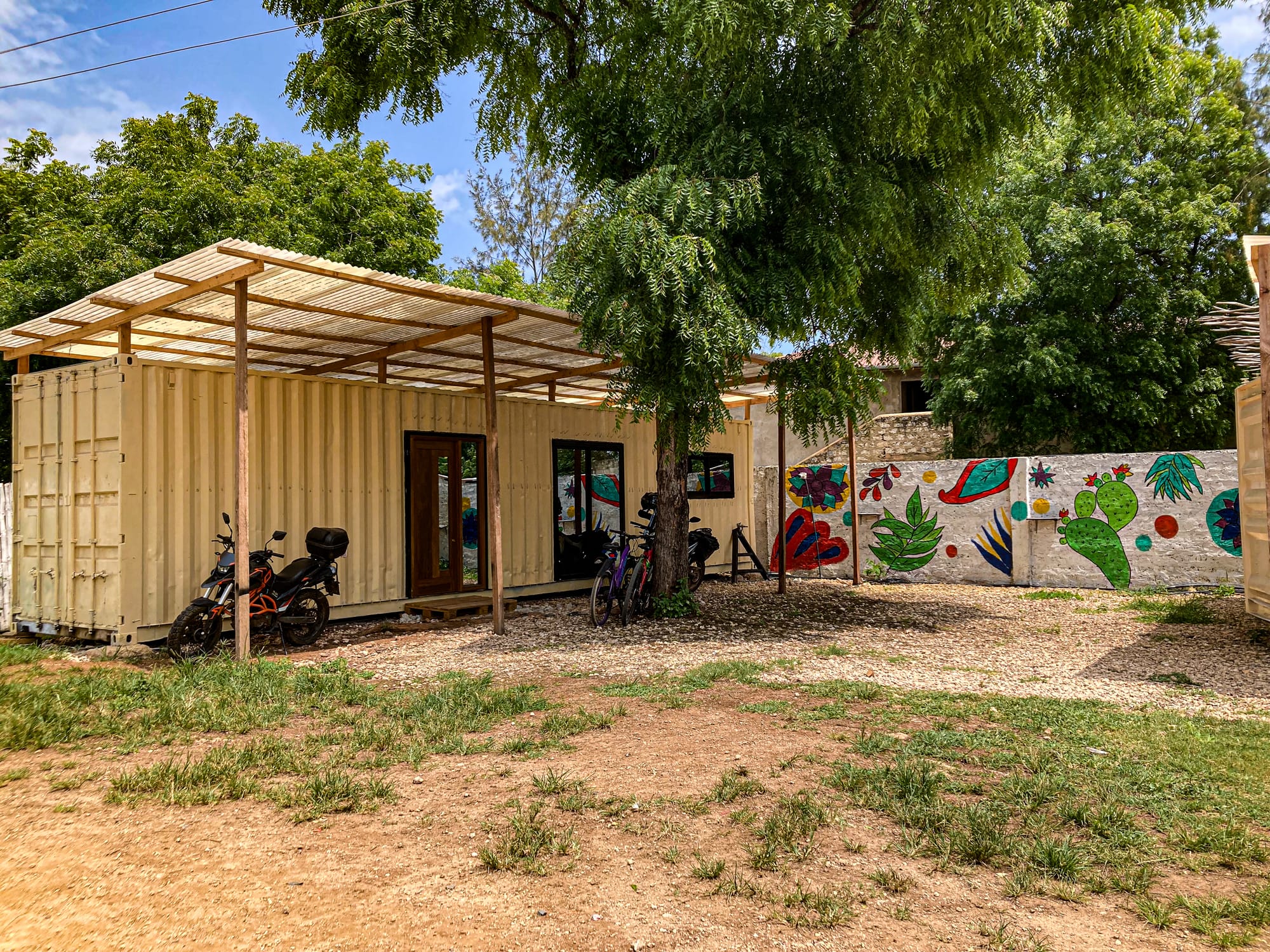
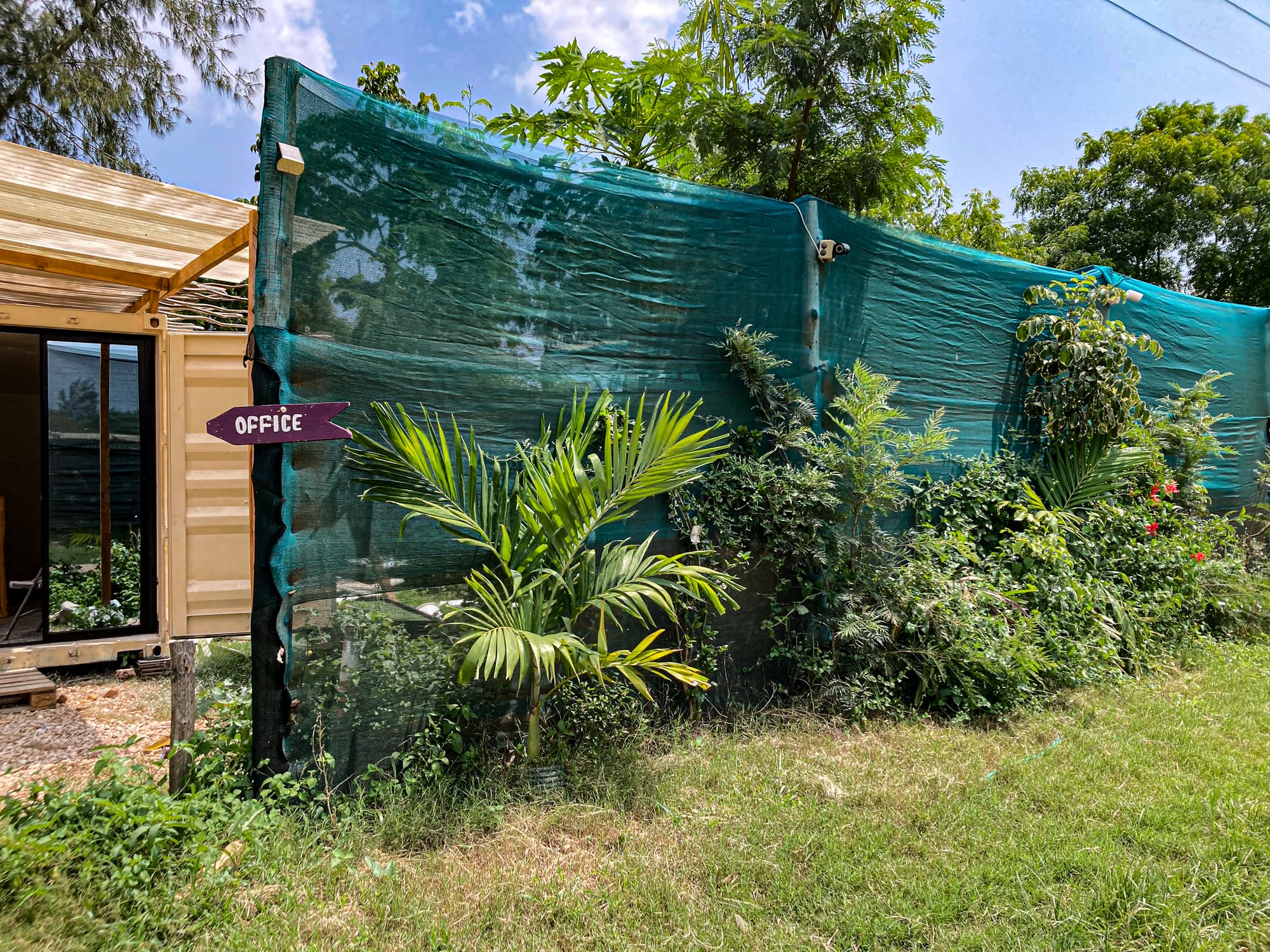
The setup is simple but effective: container rooms with desks, a shaded pool for mid-day breaks, a small gym, and House of Woodfired, the onsite restaurant famous for its pizzas and poke bowls (including vegan options). Meal plans mean you don’t have to think too hard about food, which makes settling into a work rhythm easier. What you notice most is the balance: quiet workdays in the co-working room give way to bonfire nights, skill-sharing talks, or group safaris organized through the community.
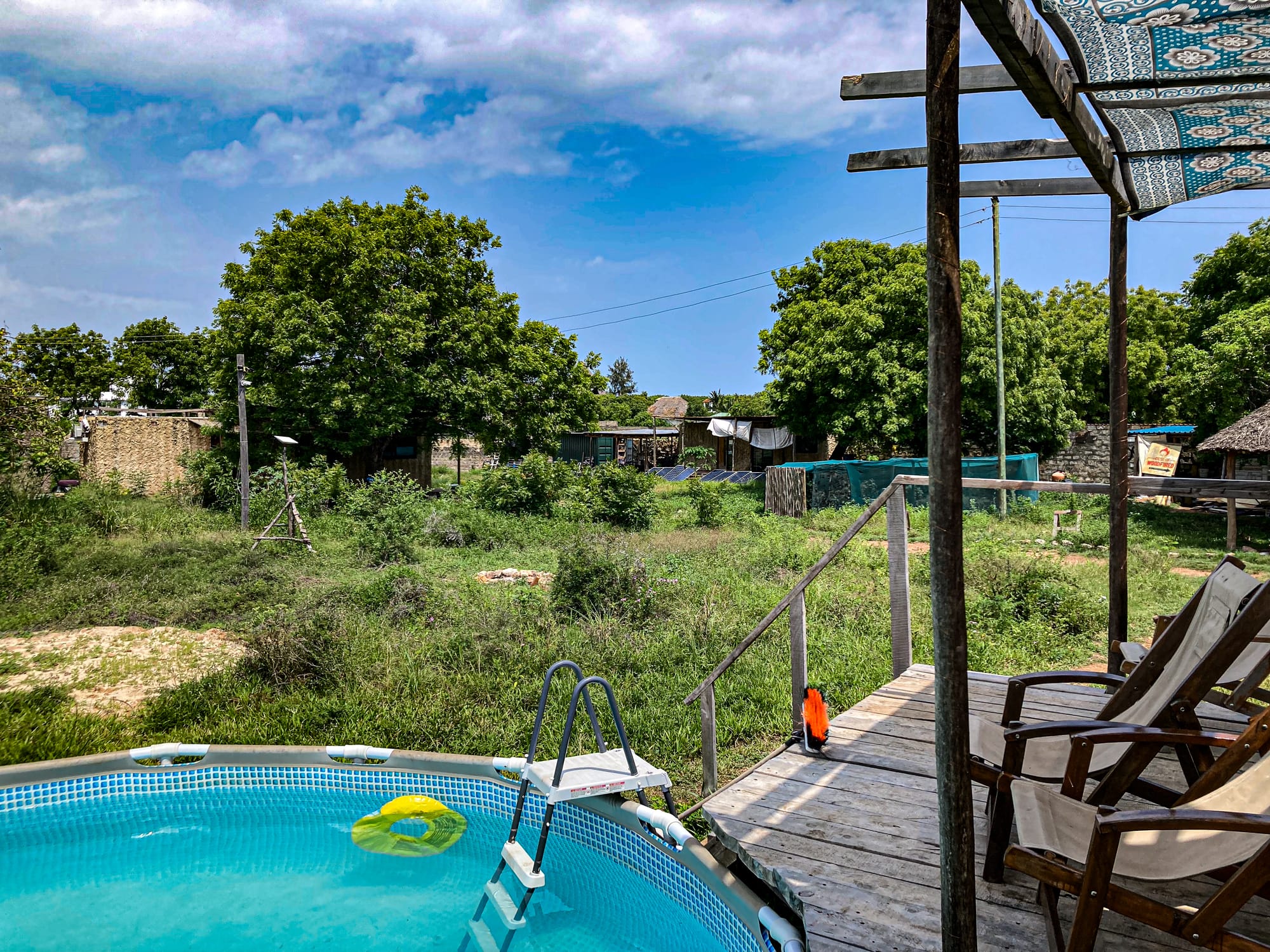
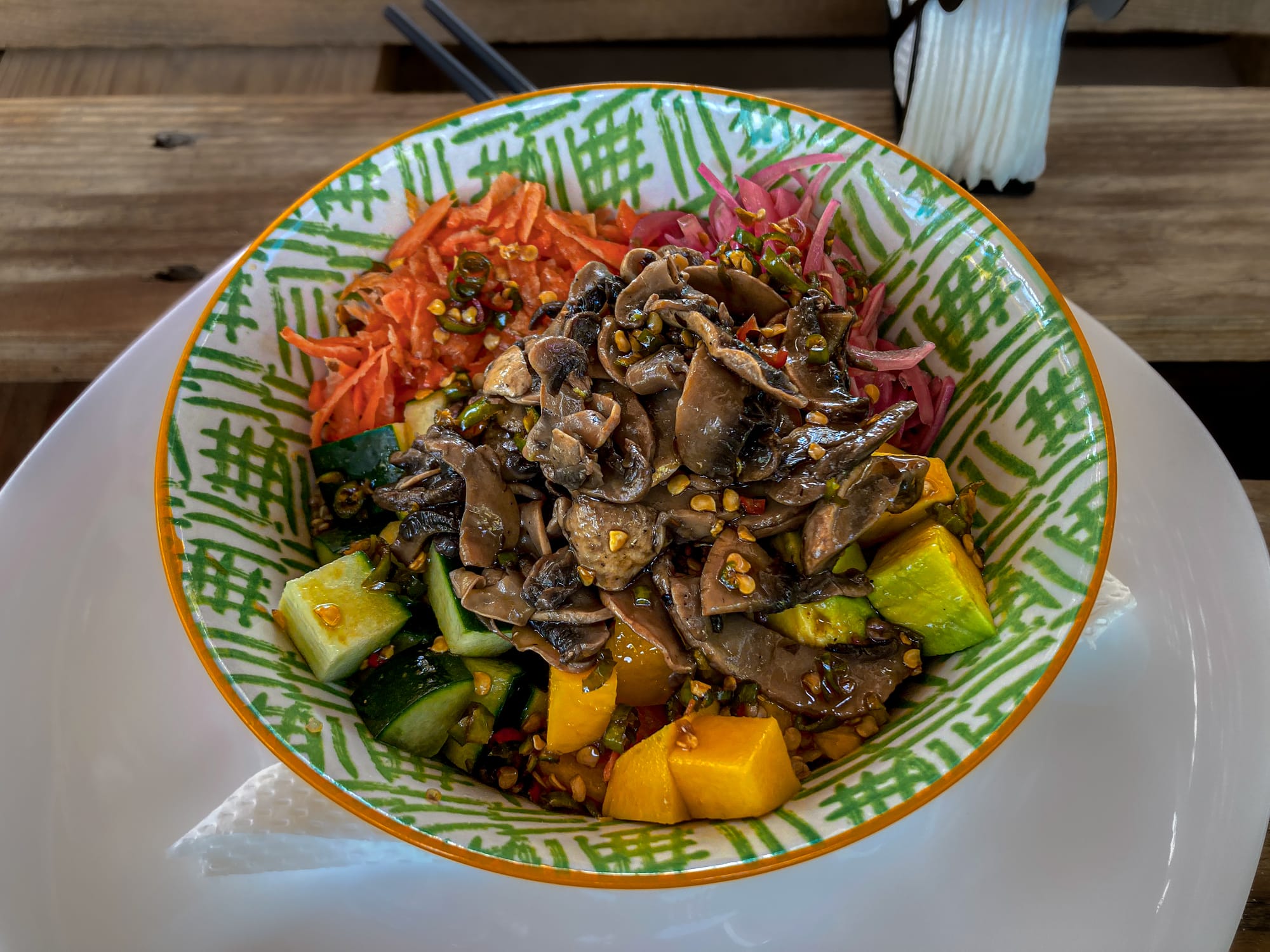
Cafés in Diani are improving—places like Kokkos are reliable for coffee and a few hours with your laptop—but the town isn’t built around a café-coworking culture. Most long-term nomads stick to Skippers or set themselves up in accommodations with decent wifi. The advantage of Skippers is the community: you’re not just booking a room, you’re joining a network of people who are there to work, live, and share the experience of coastal Kenya.
Digital nomad community
Diani has a growing, intentional community centered around Skippers Coliving. Skippers tends to be the entry point for most nomads on the coast, with a mix of remote workers, creatives, and long-term travelers gathering around its coworking space, bonfires, and group safaris. The vibe is intimate rather than overwhelming: shared pizzas, or evenings around the fire instead of big, organized mixers. Because most people come through for a few weeks or months, the community shifts frequently—but the connections you make often go deep, fast.
Outside of Skippers, Diani’s social life is more organic. The overlap with locals is also stronger here than in many nomad destinations. You’ll often find yourself talking with Kenyan staff, neighbors, or fellow beachgoers just as much as with other internationals. That cross-pollination adds richness and keeps Diani from feeling like a bubble.
If you’re looking for a polished, highly organized nomad ecosystem, Diani isn’t there yet. But if you’re open to a smaller, more fluid community that blends with local life, you’ll find it rewarding. The friendships that form here often center around shared adventures—a weekend safari, a beach bonfire, or a day trip into town—rather than structured events. For many, that balance of work, play, and real cultural immersion is exactly the point.
Diani Beach's culture
Diani’s culture is coastal Kenyan at its core, shaped by Swahili traditions, Indian Ocean trade, and a rhythm of life that flows between family, work, and celebration. On the beach you’ll see fishermen pulling in their morning catch, women carrying baskets of fruit balanced gracefully on their heads, and children racing barefoot at sunset. Inland, small kiosks, fruit stalls, and open-air markets form the everyday backbone of life, where shopping is still done face to face, often with conversation and exchange beyond the transaction.
Food is central to the culture. Chapati, beans, sukuma wiki, and coconut curries are staples, often cooked in simple kitchens but rich in flavor. Street vendors sell roasted maize, samosas, or fresh mango slices dusted with chili salt. Family meals are important, as are community gatherings that spill into music and dance. Weddings and holidays are celebrated loudly and collectively, with neighbors and extended families filling the streets. Music—whether taarab, gospel, or modern Bongo Flava—sets the tone of many evenings, floating out of shops and tuk-tuks alike.
Diani is also a place where religion and tradition meet daily life. Mosques and churches are scattered throughout town, their calls to prayer and choirs carrying across neighborhoods. Sundays see families dressed in their best, walking to services before gathering for shared meals. Holidays like Eid and Christmas are felt widely, each celebrated with food, color, and community.
Even though Diani is known abroad as a resort destination, the culture here is not curated for visitors. Markets hum whether or not tourists are around. Football matches draw crowds on dusty fields. Tuk-tuk drivers swap jokes at roadside stands. There’s a vibrancy that comes from knowing that life isn’t seasonal here—it’s year-round, shaped by family, by the coast, and by the warmth of community. For nomads who stay longer, this is what makes Diani unforgettable: the chance to move beyond the resort image and witness a culture that is resilient, celebratory, and deeply connected to place.
Psychogeographics
What does it actually feel like to live in Diani Beach for a month or more? Think barefoot mornings, salt air carried through palm trees, and afternoons where the ocean is always just a few steps away. This is a place where your days stretch between the glow of your laptop screen and the shimmer of turquoise water, where work calls might pause for a swim, and evenings end with bonfires or chapati wraps on the roadside.
Life here moves with the coast. The rhythm is tidal: slow and expansive, punctuated by the buzz of tuk-tuks on the main road, the laughter of children chasing kites at sunset, and the hum of music spilling from beach bars and boda-bodas alike. Time feels both unhurried and full—hours dissolve in the heat of the day, yet you find yourself more present, more attuned to small details: the smell of chapati frying, the rustle of coconuts in the wind, the sight of families gathering on Sundays to swim together.
The palette is tropical and vivid: white sand so bright it glows, the deep greens of banana leaves and coastal forest, red earth roads that dust your shoes, and a sea that shifts from turquoise to indigo with the light. The culture is communal, celebratory, and resilient—you feel it in weddings that fill entire streets with music, in markets stacked with jackfruit and pineapples, in the warmth of greetings from people you pass every day.
We wrote a full piece on the texture of life here: Kitesurfers and coconut stalls: digital nomad life in Diani Beach.
Where to stay
In Diani Beach, you can base yourself in a coliving like Skippers, which is designed with remote workers in mind, or choose from private apartments, boutique hotels, and beachside villas. Here are our top recommendations, grouped by style and vibe:
Best for community & coworking
Skippers Coliving: Skippers is more than just a place to stay—it’s a hub for remote workers. It includes its own coworking space, restaurant, pool, and small gym. The vibe is welcoming, low-key, and ideal if you want to meet fellow travelers while having the infrastructure to get work done.
Best for comfortable apartments
Wayside Beach Apartments: Spacious, air-conditioned apartments with kitchens, balconies, or garden views. Features include an outdoor pool, terrace, and barbecue area. Located just off Diani Beach Road and a short walk from the shoreline.
Diani Pearl: Blending traditional Lamu architecture with modern comfort, Diani Pearl offers apartments with kitchens, balconies or patios, and access to two outdoor pools in landscaped gardens. Their rooftop terrace has sweeping Indian Ocean views.
Casa Marabella: Containing 1- and 2-bedroom apartments, Casa Marabella offers a rooftop pool, private beach area, and optional spa treatments. A good choice for couples or groups who want space and amenities.
Magenta Apartment: A one-bedroom apartment close to Ukunda Airport and Skippers Coliving. Includes a kitchenette, living room, terrace with garden views, and wifi.
Best for boutique & eco stays
Boxo Eco Hotel: Just a 3-minute walk from Galu Beach, Boxo offers modern, container-style accommodations right on the sand. Guests can enjoy an outdoor pool, onsite restaurant, café, and wifi.
Upani in Diani: Serene rooms and cottages set in leafy gardens, with a year-round outdoor pool, sun terrace, and shared kitchen option. Offers a quiet, lush atmosphere with wellness packages.
Swahili Oasis: A private two-bedroom villa tucked behind Diani Shopping Centre, with a lush garden, terrace, and kitchenette. Guests love the fresh mangoes and coconuts straight from the garden.
The best things to do in Diani Beach
Diani Beach has no shortage of things to do—but what stayed with us most weren’t just the long stretches of white sand or the polished resort offerings. It was the rhythm of local life, the mix of sea and culture, and the small moments that make the coast feel alive: grabbing fresh coconuts on the beach, biking through village roads, or watching the tide reveal sandbars that look like another world.
This list gathers our personal highlights. Some have their own full posts if you’d like more detail, photos, or tips.
Wildlife and nature trips
Tsavo East National Park
Red earth, endless sky, and the silhouettes of elephants on the horizon.
Tsavo East is one of Kenya’s largest and oldest parks, known for its scorched red soil and sweeping savanna that feels both raw and cinematic. A game drive here can take you past prides of lions sprawled in the shade, herds of giraffes picking at acacia branches, and zebras crossing the tracks in patterned waves. But it’s the elephants—coated in rust-colored dust—that leave the deepest impression, moving in slow, deliberate groups across a backdrop that seems to stretch forever.
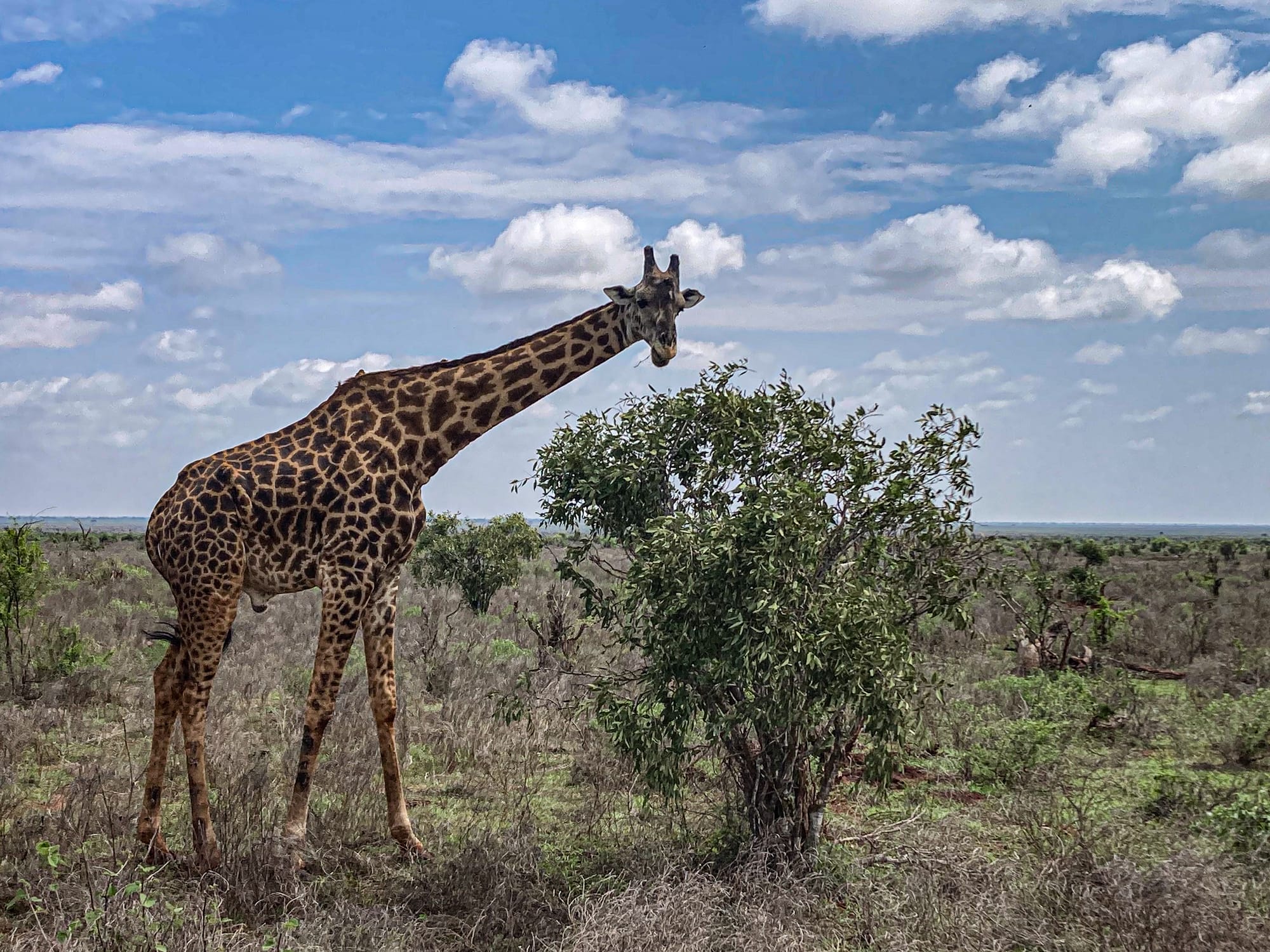
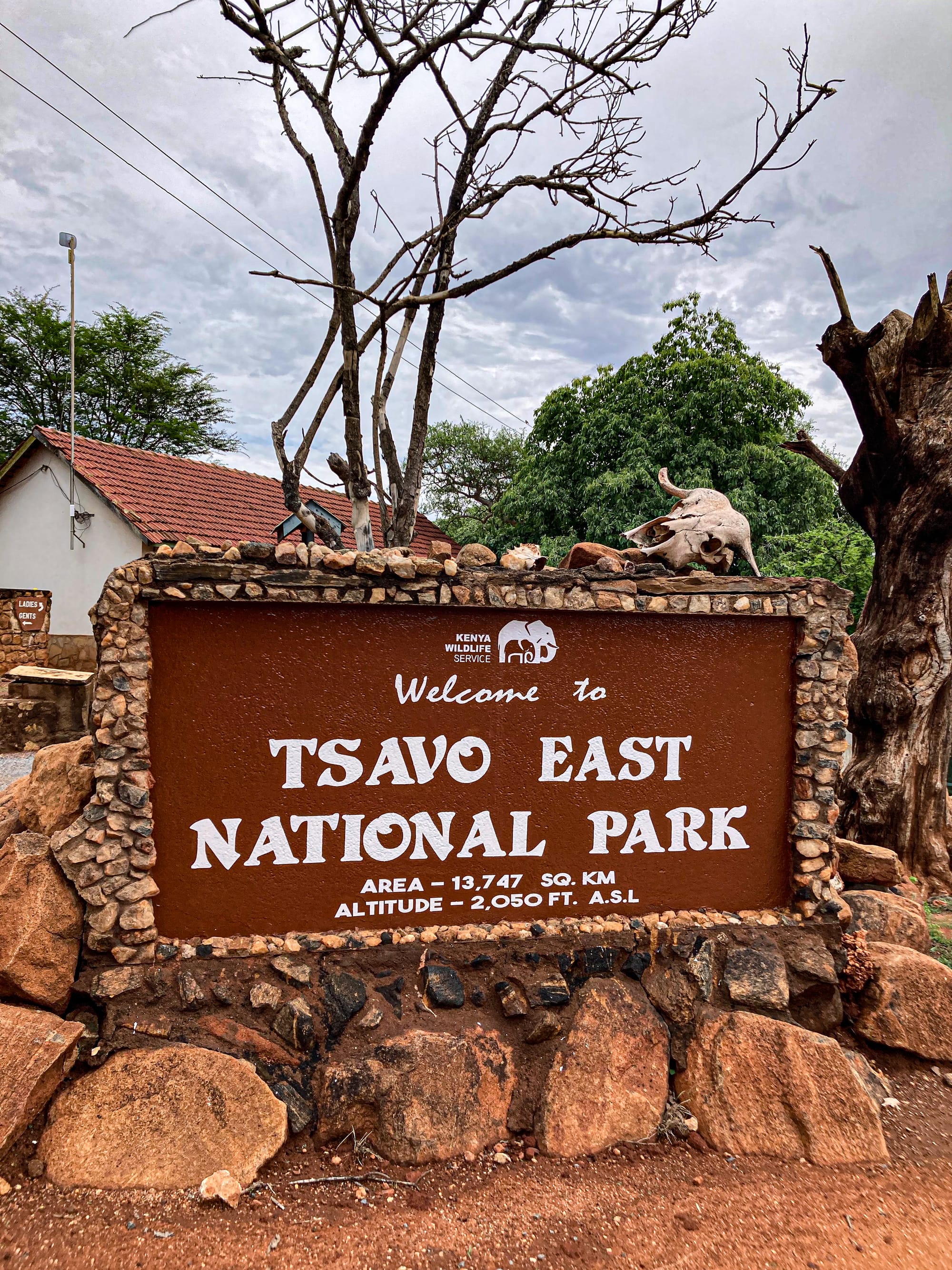
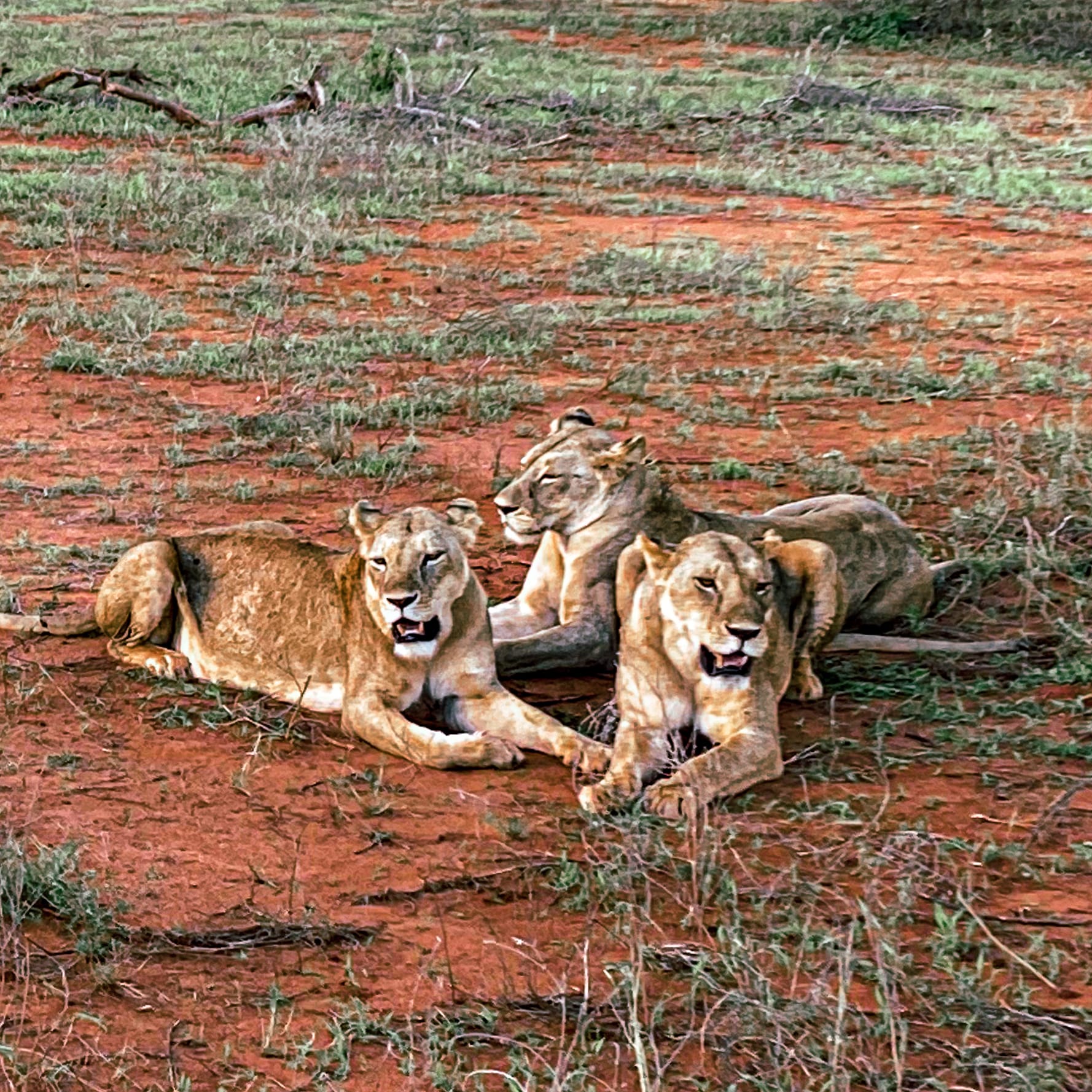
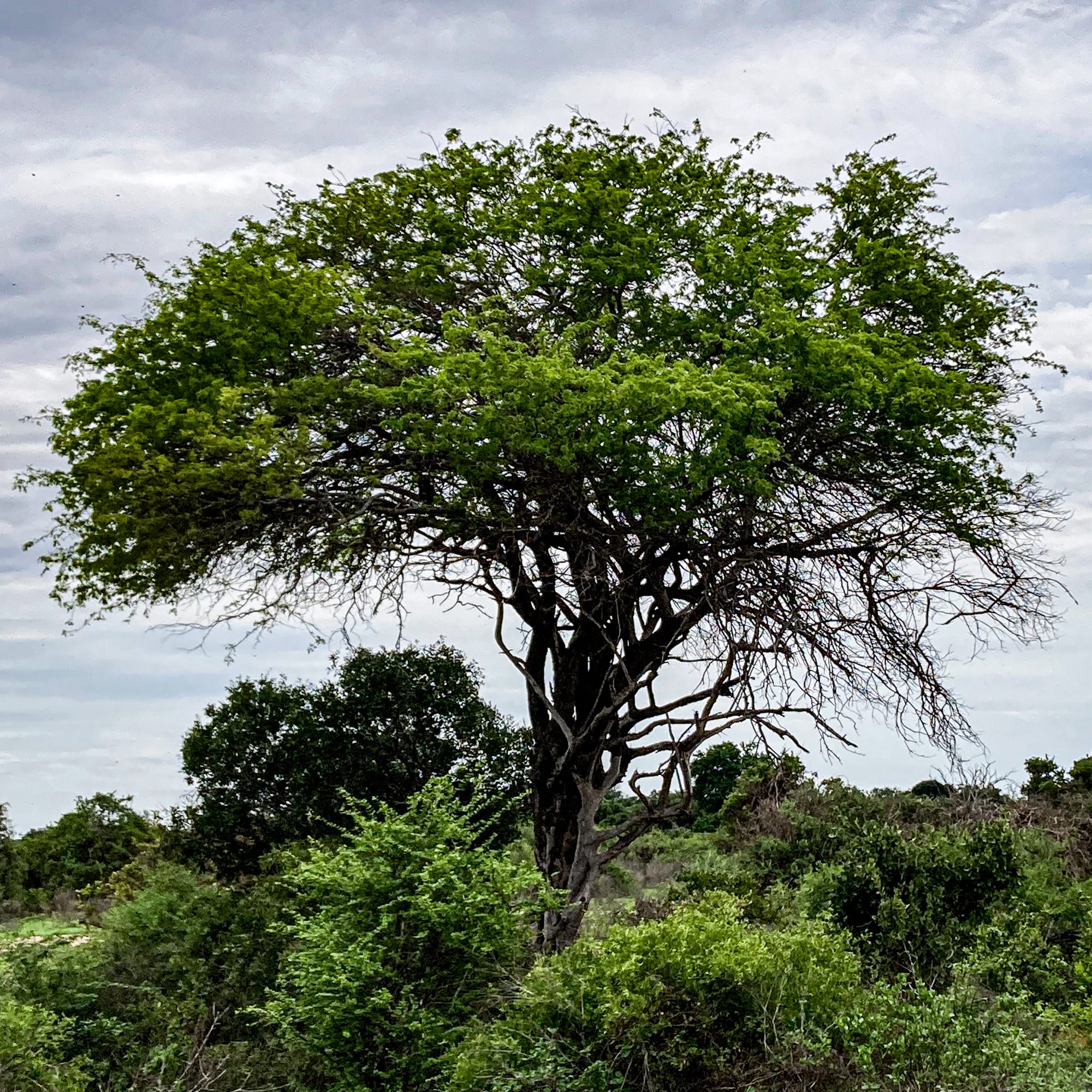
Most safaris start early, with the sun still low and the air cool, and continue through the day with stops at lodges or viewpoints. Jeeps travel in radio contact, so when one spots a lion or a rare leopard, others rush to join—an adrenaline jolt as you bounce along dirt roads chasing the sighting. If you’re staying in Diani, it’s easy to book through local operators, turning a few days into an unforgettable detour into the wild heart of Kenya.
Shimba Hills
Coastal forest, rolling hills, and a different kind of safari.
Just an hour inland from Diani, Shimba Hills National Reserve offers a lush counterpoint to the beaches. The air is cooler here, shaded by thick forest canopies that open into grasslands where you might spot sable antelope, elephants, or giraffes moving slowly across the slopes. The views stretch all the way back to the Indian Ocean, and waterfalls like Sheldrick Falls add a sense of hidden drama to the reserve. It’s quieter and less touristed than the bigger national parks, giving the whole place a more intimate feel.
Day trips are easy to arrange from Diani, and the reserve is small enough to explore in just a few hours while still feeling expansive. Guided walks are available for those who want to experience the forest on foot, while game drives let you cover more ground and catch wildlife at different vantage points. If you’re staying in Diani and want a safari experience without the long drive to Tsavo, Shimba Hills is the perfect nearby adventure.
Wasini Island
Coral gardens, clear waters, and the shimmer of tropical fish.
Just off the south coast near the Tanzanian border, the marine park around Wasini Island is one of the best places in Kenya to get underwater. Here the Indian Ocean is warm and impossibly clear, with coral reefs sheltering parrotfish, angelfish, and bright schools that flash by in synchronized waves. On calm days you can drift over coral gardens, spot sea turtles, and surface to the sound of dhows sailing slowly past. It’s a world away from the bustle of the mainland, a reminder of how alive these waters really are.
Most trips start with a dhow ride out from Shimoni, pairing snorkeling with a lunch on the island itself. The excursions often include dolphin-spotting en route, and the chance to spend the afternoon exploring the village or simply watching the tide roll in. If you’re in Diani for more than a few days, this is a must-do: part ocean adventure, part cultural excursion, and easily one of the highlights of the coast.
The Africa Pool
A hidden tide pool shaped like the outline of Africa.
South of central Diani, the coastline folds into rocky shelves where the ocean has carved natural pools into the coral stone. The most famous is the so-called “Africa Pool,” a deep, turquoise basin that—when seen from above—looks uncannily like the continent itself. At low tide, the water inside is calm and clear, protected from the waves by a natural rim. Locals and travelers alike come here to swim, float, and snap photos of one of the coast’s quirkiest natural landmarks.
Timing is everything: the pool is only accessible at low tide, and it’s best to go with a guide who knows the safe entry points. Bring reef shoes, as the coral can be sharp, and expect a short walk across tidal flats to reach it. For nomads spending weeks in Diani, the Africa Pool is a reminder that the coastline is more than just endless beach—it’s full of small, surprising places where land and sea collide in unexpected ways.
Funzi Island
Mangroves, sandbanks, and a slower rhythm of coastal life.
Just south of Diani, Funzi Island is an off-the-beaten-path escape where time seems to soften. Traditional wooden dhows carry you across mangrove channels, past fishermen casting nets and egrets lifting off into the sky. At low tide, sandbanks emerge from the sea like hidden worlds—you can walk barefoot on powdery sand with nothing but turquoise water in every direction. The island itself is quiet, with a small village and a way of life that still feels deeply tied to the tides.
Day trips usually combine a boat tour through the mangroves, a stop on the sandbank, and a lunch prepared by locals. Some tours include visits to the nearby river to spot crocodiles or birdlife, making it a varied excursion that mixes adventure and calm. Compared to the busier draws around Wasini, Funzi feels more intimate, a place to exhale and enjoy the coastal landscape at its most elemental. For anyone staying longer in Diani, it’s the kind of trip that deepens your sense of the region beyond the beach.
From Nairobi on your way in/out
Lake Naivasha
A freshwater expanse alive with birds, hippos, and wide skies.
Lake Naivasha, just a few hours from Nairobi, is one of the Rift Valley’s most atmospheric spots. Out on the water, you’ll drift past pelicans with their oversized beaks, fish eagles swooping down for their catch, and hippos lounging half-submerged near the reeds. Dead acacia trees jut dramatically from the lake, their silhouettes reflected in shifting ripples, while the horizon stretches wide and untamed. It’s a place where the wild feels immediate—close enough to touch.
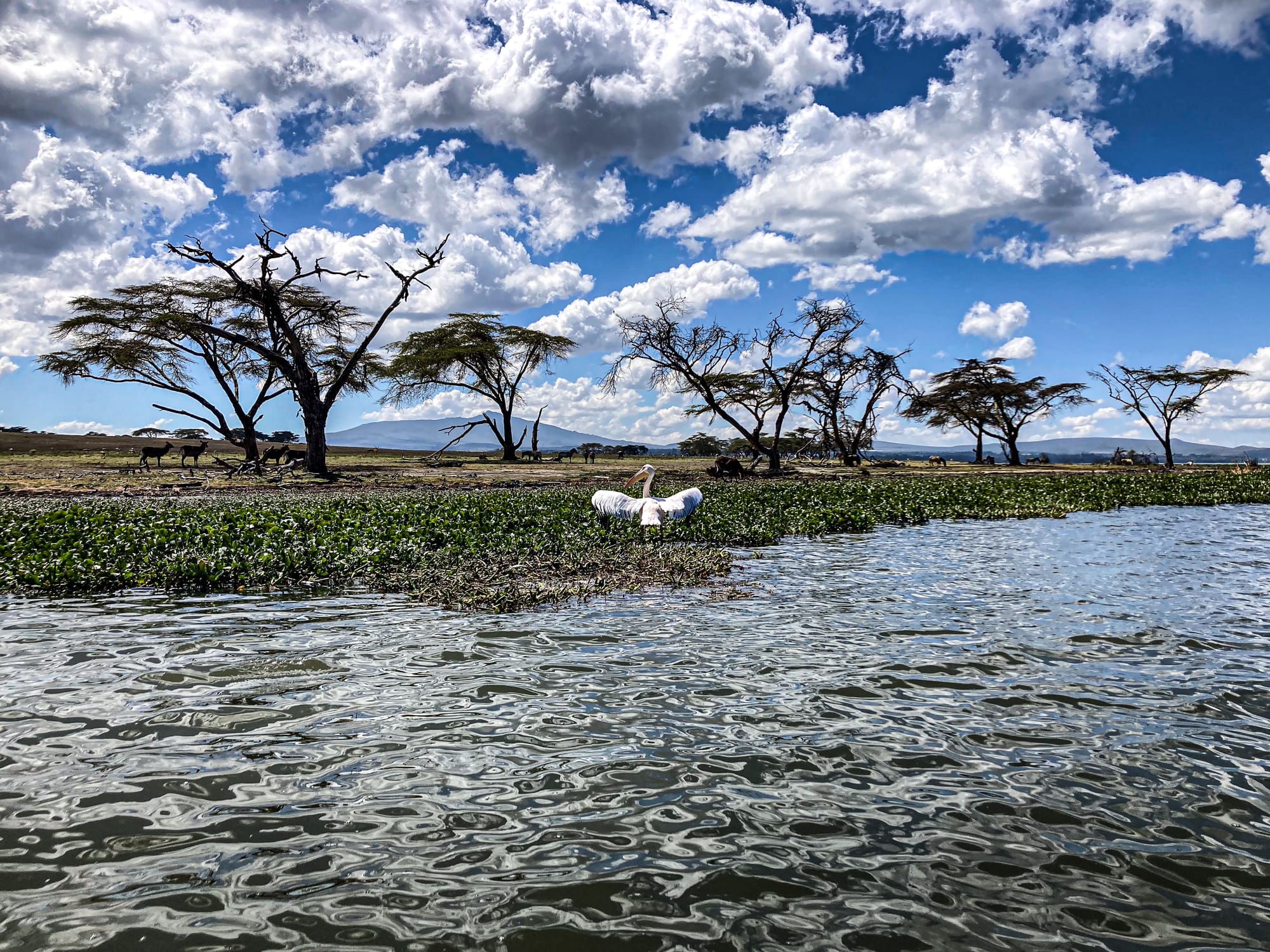
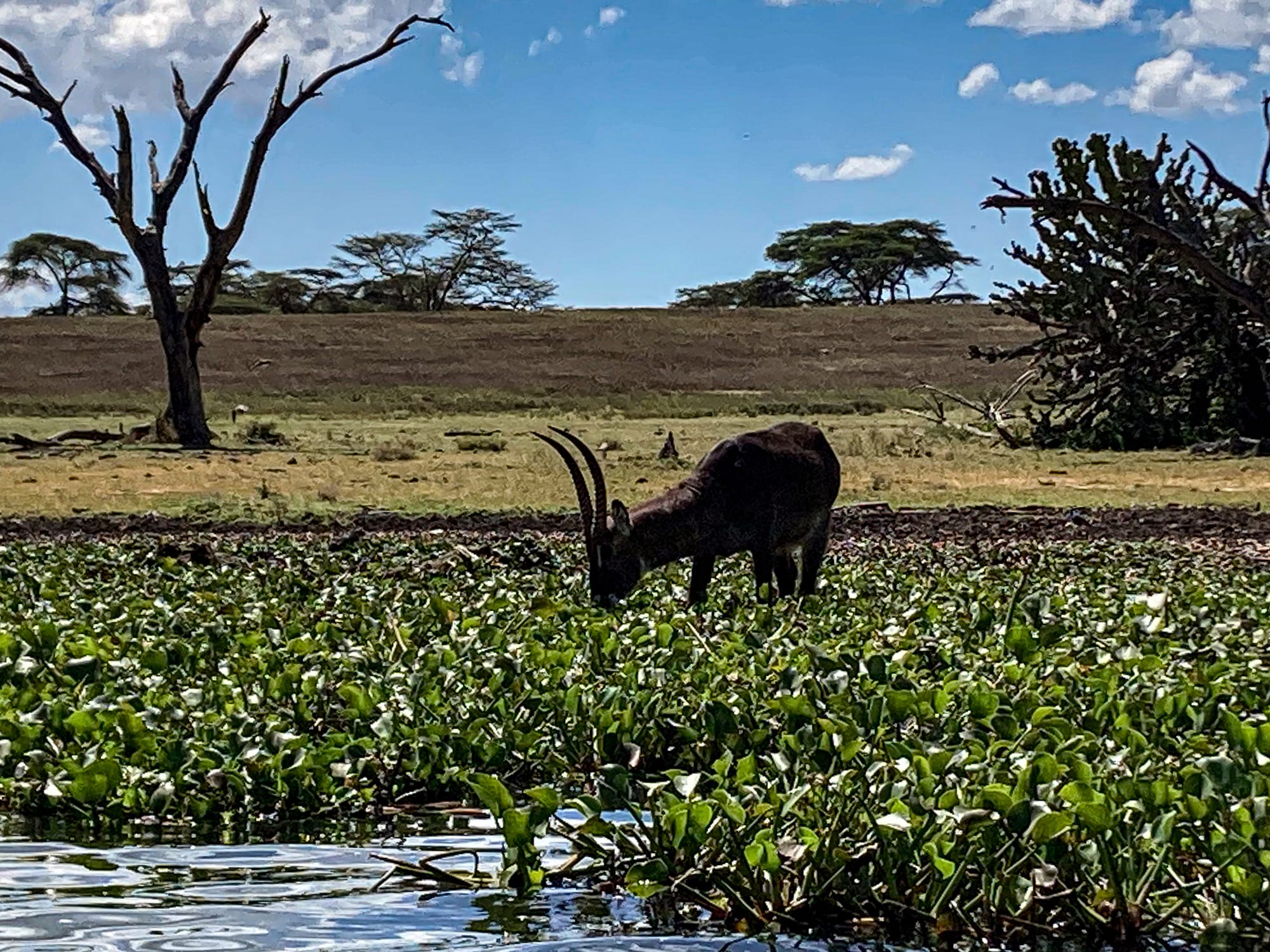
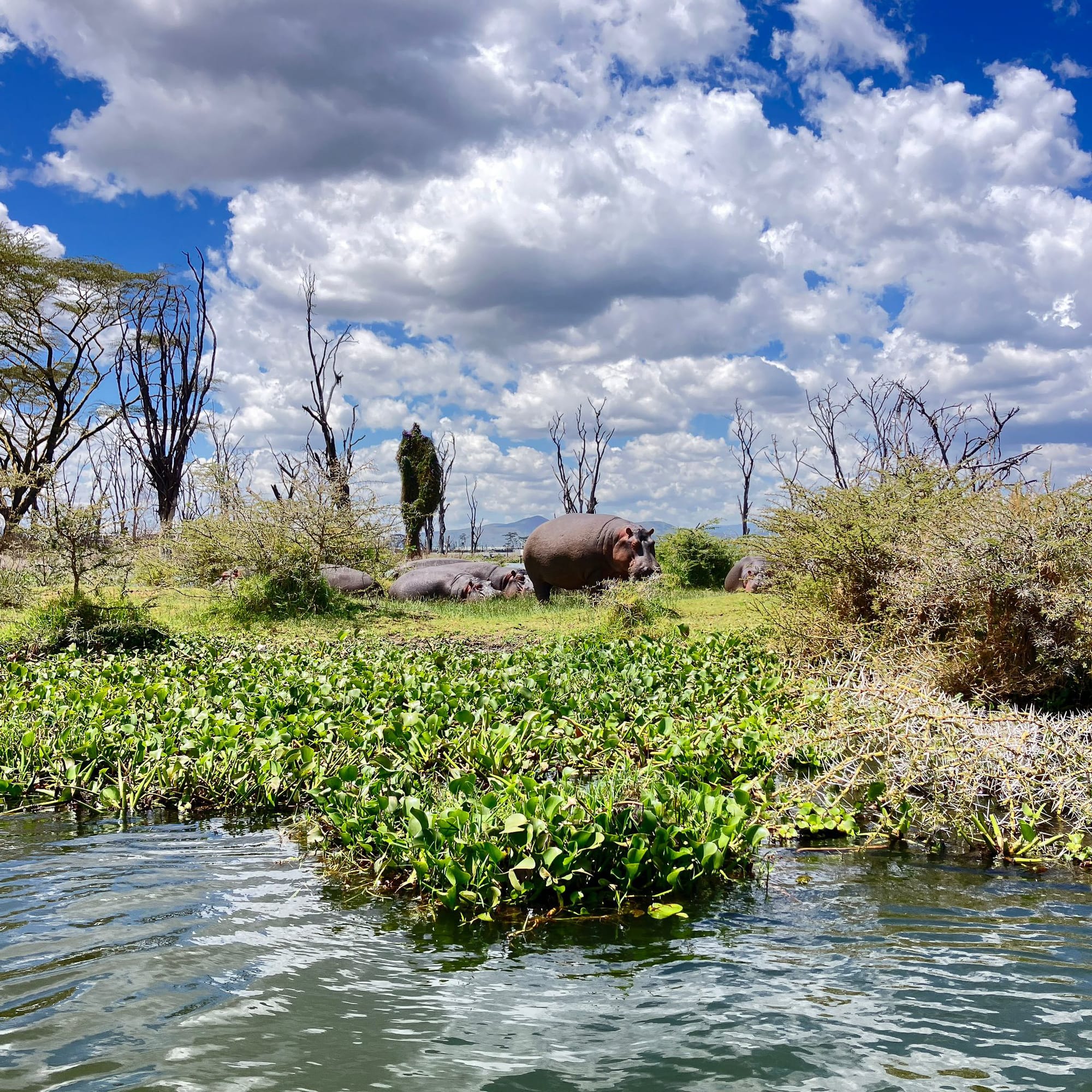
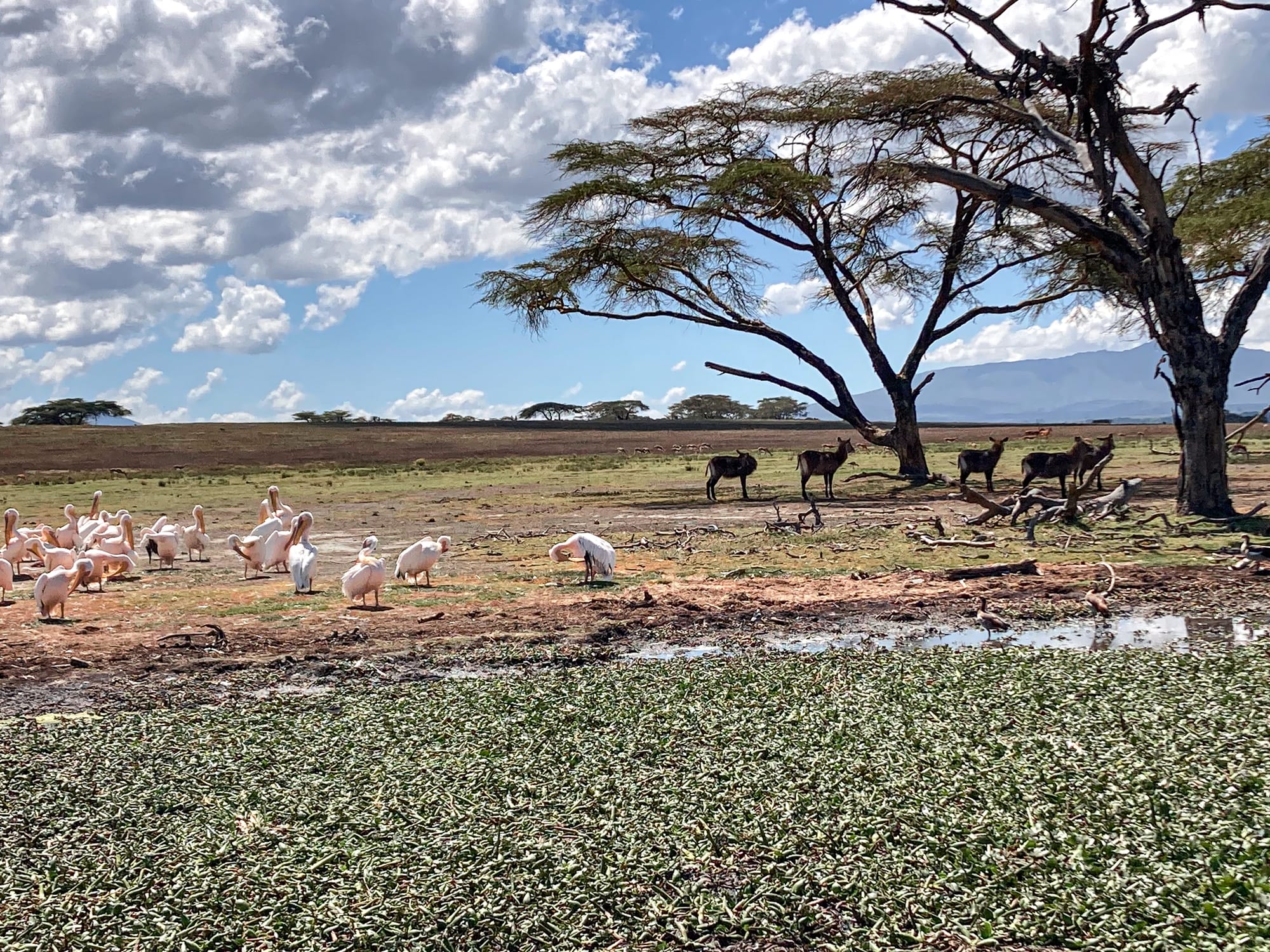
Boat trips can be arranged from the lakeshore and usually last an hour or two, giving you plenty of time to spot wildlife and soak up the stillness. If you’re visiting Naivasha as part of a Nairobi stopover, this is one of the best ways to shift gears and settle into Kenya’s landscape. Pair it with lunch at a lakeside café or a stroll through the local town, and you’ll get both nature and culture in a single afternoon.
Hell’s Gate National Park
A ride on red earth, with zebras as your companions.
Hell’s Gate is one of the few national parks in Kenya where you can cycle right alongside wildlife, and the experience is unforgettable. The road winds between sheer cliffs and dramatic rock towers, with warthogs scuttling across the path and herds of zebras grazing so close you can almost hear them chew. The pace is yours to set—slow and observant or fast and exhilarating—but either way, the scale of the landscape makes you feel small in the best way possible.
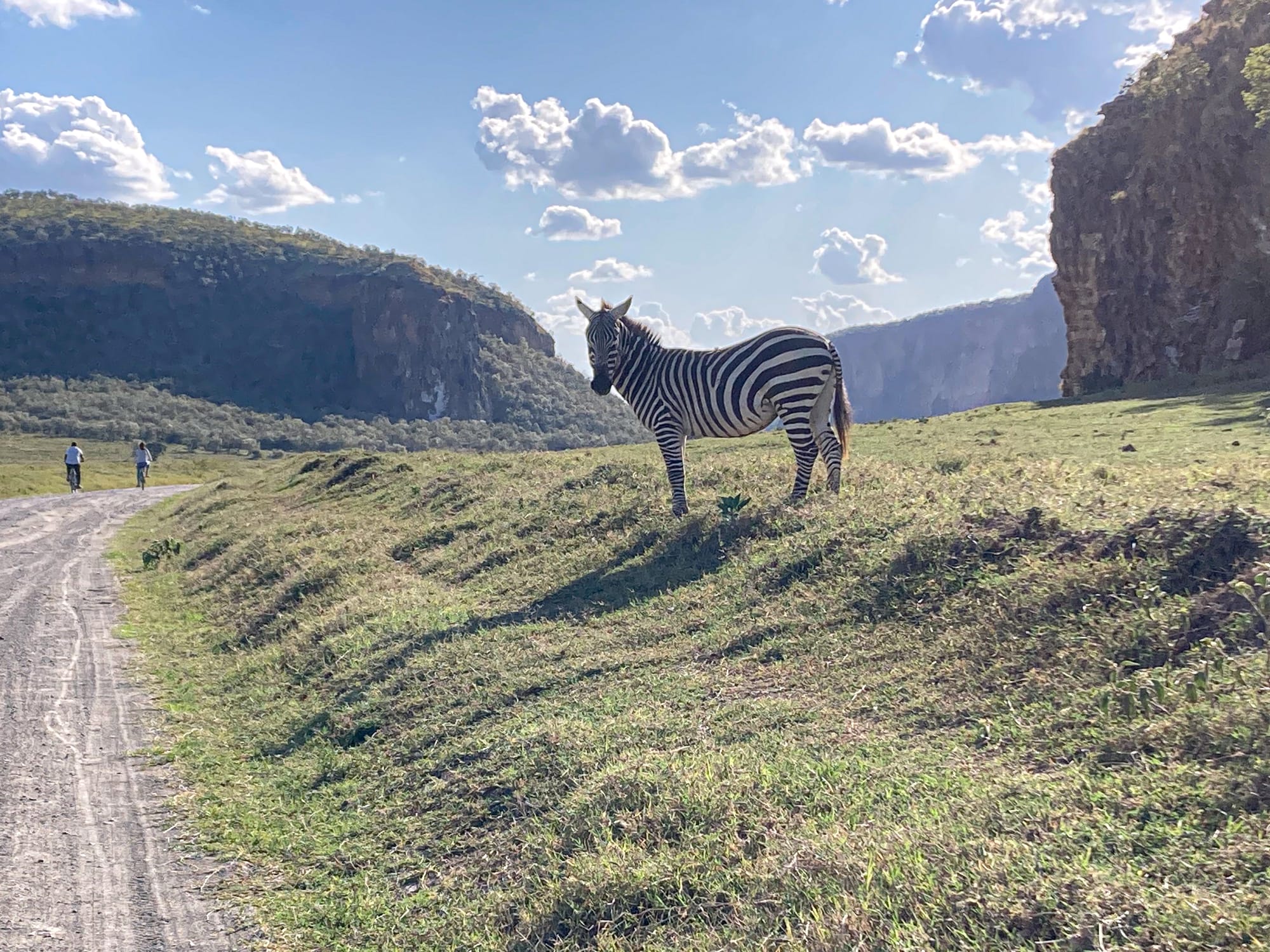
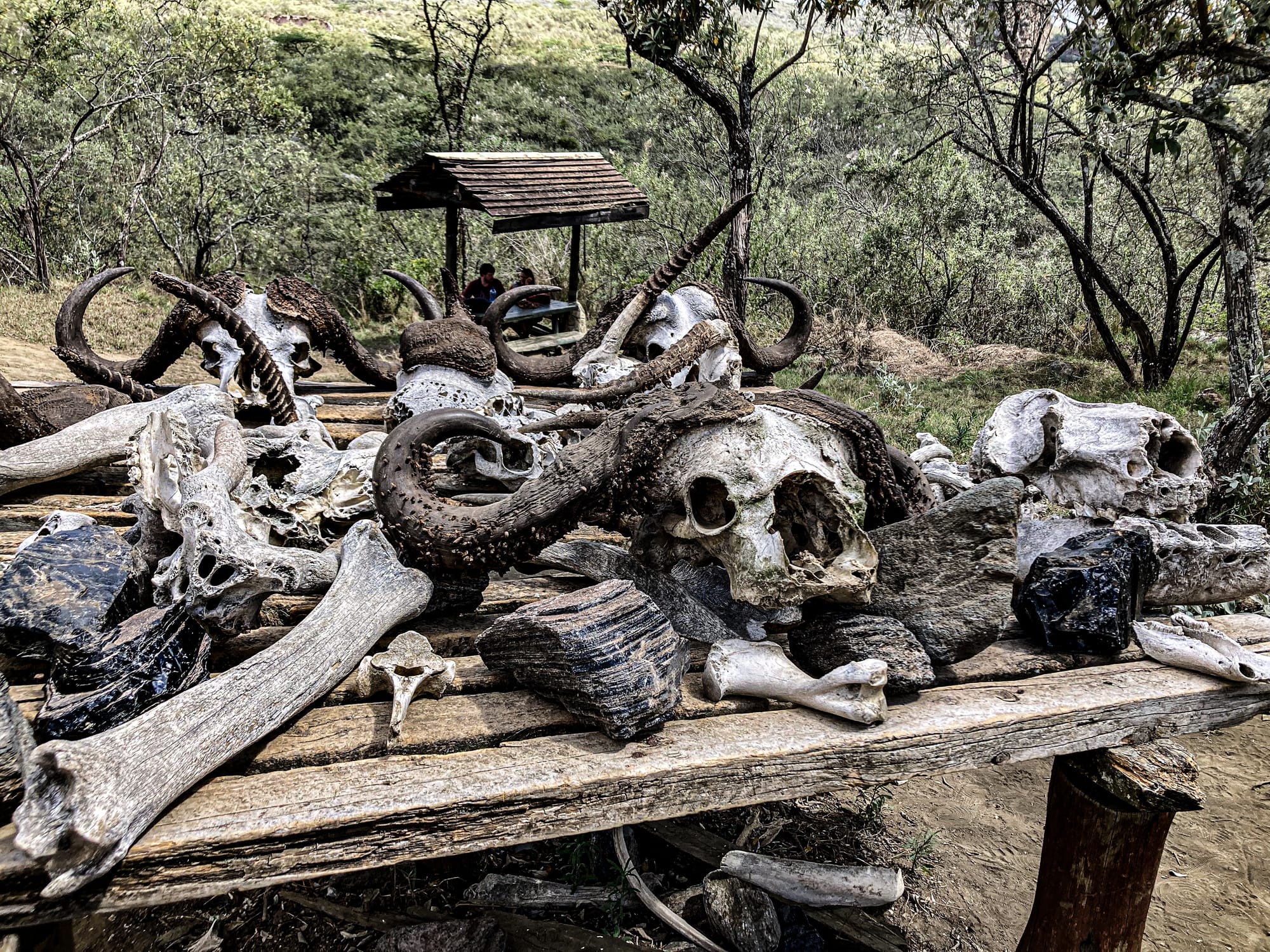
Bikes can be rented at the park entrance, and the main loop is manageable for most fitness levels, though the midday sun can be intense. Bring water, sunscreen, and curiosity, and give yourself time to stop for photos or simply watch the animals move through their habitat. It’s not the typical safari-in-a-Jeep experience—here, you’re in the landscape, pedaling through it, and that intimacy is what makes Hell’s Gate so memorable.
Essential tools for Diani Beach
For nomads living and working from Diani Beach, these tools made our stay smoother.
Saily Global eSIM
Instant global mobile data without needing a local SIM. Saily global eSIM gives you mobile data in Kenya and dozens of other countries—no need to buy a separate local SIM when you arrive. Great for digital nomads who hop between places and want one seamless solution that works everywhere.
SafetyWing (global health & travel insurance)
An affordable, digital-nomad-friendly insurance plan that covers both travel hiccups and medical needs. We like that it runs month-to-month and can be started even if you’re already abroad. Helpful for peace of mind, especially on remote islands where care may require transfers or added costs.
NordVPN
A lightweight, fast VPN that lets you secure your connection on public wifi—especially important when working from colivings, cafes, or airports. It also lets you access content as if you were back home, which is helpful for banking, streaming, or logging into sensitive accounts.
Wise (multi-currency payments)
Our favorite banking solution for multi-currency payments and avoiding bad exchange rates. Wise lets you pay in Kenyan shilling locally and manage funds across dozens of currencies. We used it to split group dinners, pay for tours, and withdraw cash without the large fees traditional banks charge.
Should you choose Diani Beach?
Diani Beach is more frontier than hotspot—rewarding if you’re looking for focus, community in smaller doses, and immersion in local culture rather than expat bubbles.
The pros?
- A stunning coastline with warm Indian Ocean waters year-round
- Skippers Coliving: a dedicated hub with coworking, community, and ease built-in
- A slower, more affordable base compared to many nomad destinations
- Easy access to safaris, marine parks, and day trips like Shimba Hills
- A chance to experience Swahili coastal culture
- Sunshine almost every month of the year
The trade-offs?
- A small, developing nomad scene outside Skippers—don’t expect plug-and-play infrastructure
- Limited café-coworking options; most remote work happens at Skippers
- Tourist-heavy strips can feel disconnected from everyday Kenyan life
- Power cuts and patchy internet do happen, though Skippers has backup options
- Hot, humid weather can be draining if you’re not used to it
- Price negotiation is baked into all transactions that occur outside a formal store, including getting around
Diani Beach is not for those chasing nightlife, a big nomad ecosystem, or endless café options. But if you want a base where mornings start with a swim, and weekends might mean sailing past dolphins or heading on safari, it’s surely a special place.
Read more
If you’re curious about how to make Diani work for you, we’ve written a bit about our experience. Check out our Diani Beach guides for more information on what we enjoyed on the island.






